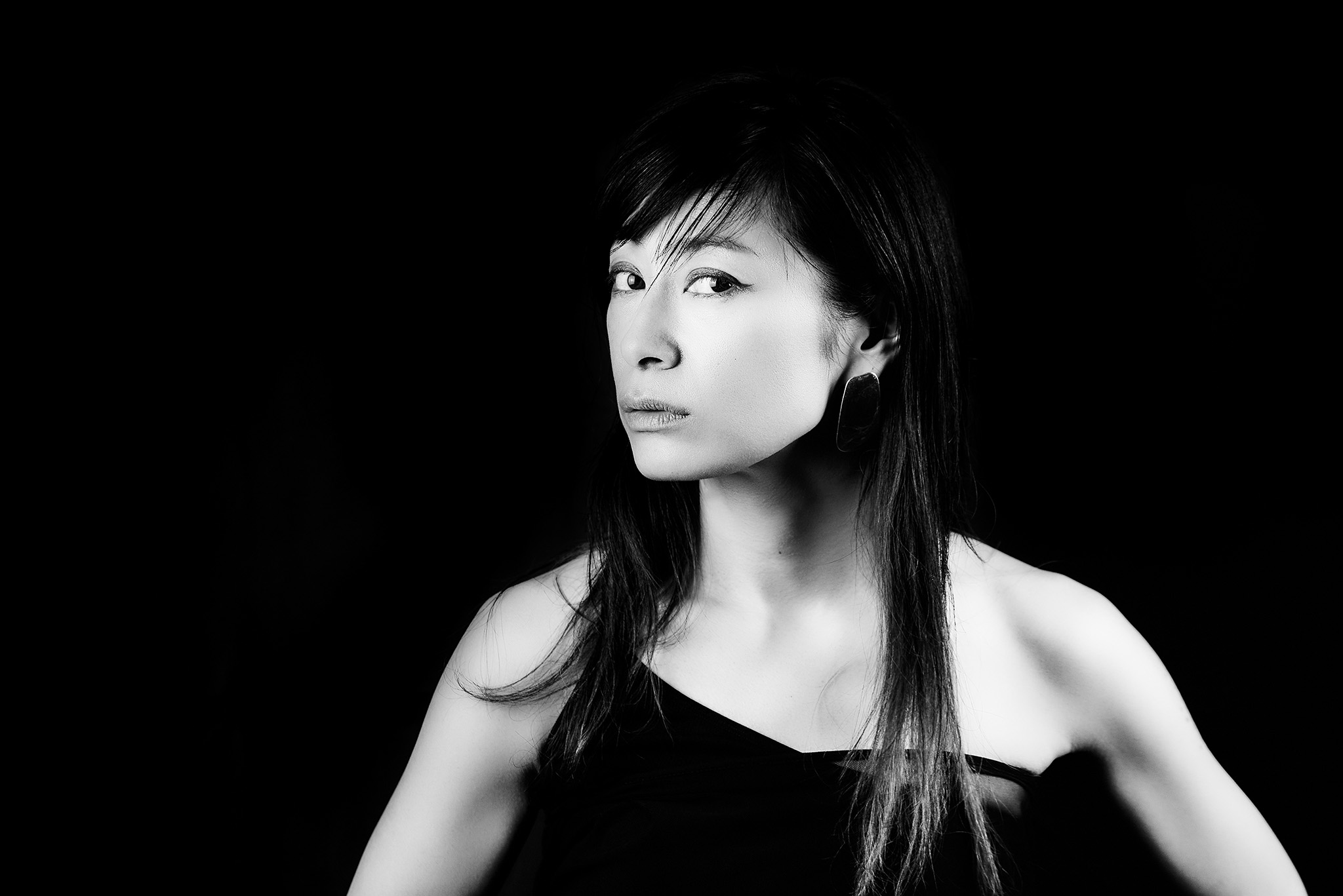Blurring the lines between physical theatre, contemporary dance performance, and audio-visual installation, the multi-media show After Aftershock Shock, directed by Jingyun Li and Saori Hala, discusses how literal and figurative earthquakes affect our bodies and lives through movement, onomatopoeic language, sound art, and video at Berlin’s Ringtheatre.
I was first interested in seeing this show because Japanese-born, Berlin-transplant experimental-techno-pop producer and performer Kyoka was scoring the piece. While Kyoka’s audience is used to seeing her performing both in nightclubs and in artsier settings, I was curious to hear what her production might be like in a traditional theatre space. The sound was fully immersive thanks to a self-assembled 14-channel installation surrounding the audience who was seated in a semi-circle around the intimate stage space. Maybe this kind of setting could be taken back to the club. How interesting would that be?
As the one-hour show started in quite a minimalistic and understated way, the audience relaxed and entered a contemplative state, absorbing sound textures and observing tame movements from the dancers. In these first quiet phases, the public incrementally discovered elements from the piece: each of the three dancers, minimal and focused lighting, different video projection points, and the soundscaping sharing the audio space with onomatopoeias and short sentences coming from changing spots of the PA and as a live voice from the performers, mostly in Japanese, Finnish, and German.
As both the soundscape and the dancers’ movements intensified, the earthquake concept started taking shape and becoming transparent to the audience. It crept up on us while enjoying a show, getting a sandwich and coffee (as I gathered from my limited understanding of Japanese), and generally minding our own business. All while the performers on stage were evolving at their own pace, but feeling some shaking here and there, as transcribed by the staccato movements of the dancers as a warning sign… until the finale of the show caught us, maybe a bit by surprise still. We witnessed projections of shaking fruit and veggies in a fridge, intimidating flashing lights, and alarming sounds, paired with the speeding movements of the dancers, trying to hold onto each other for dear life, ending in darkness and out of breath, till we realized it was over and clapped for three rounds — yes, the show was that good.
Now how does this feel in September 2022? Have the past two and a half years been an earthquake or just warning signs? The way our world is shaken by climate, viruses, and social movements from across the political spectrum… the ways our so-called elites refuse to be flexible not to crack, just like Japanese building towers sway in the quakes and stand straight again afterward and instead respond with more division, more manipulation, and more weaponization of every aspect of our lives. Will we have to learn how to be shaken and grab onto each other to survive? Time will tell. For now, you can read the performance statement and check the full cast HERE, and discover more of Kyoka’s sound HERE.
By Nadia Says.
Asuka Julia Riedl, Saori Hala, and Susanna Ylikoski


Kyoka by Jordi Cervera

Saori Hala by Sylvia Steinhäuser


